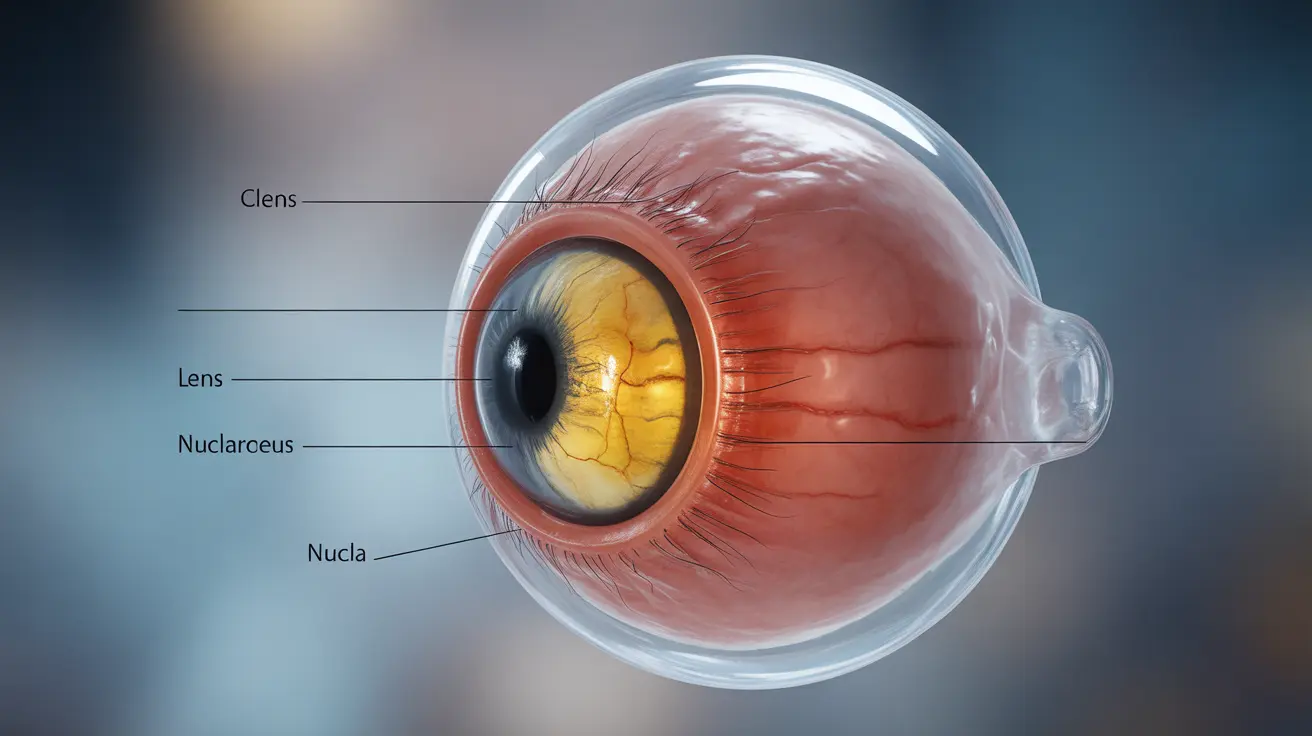Nuclear sclerosis is an age-related eye condition that affects the lens of the eye, causing gradual changes in vision as we get older. This natural aging process occurs when the central portion (nucleus) of the eye's lens becomes more dense over time, potentially affecting how we see and interact with the world around us.
While nuclear sclerosis is a common part of aging, understanding its symptoms, progression, and management options is crucial for maintaining optimal eye health and quality of life. Let's explore this condition in detail, including how it differs from cataracts and when medical intervention might be necessary.
Understanding Nuclear Sclerosis and Its Impact on Vision
Nuclear sclerosis develops as part of the natural aging process of the eye's lens. The condition occurs when the proteins in the lens nucleus become more densely packed together, leading to a gradual hardening and slight yellowing of the lens. This process typically begins around middle age and progresses slowly over time.
Common Visual Changes
People with nuclear sclerosis may experience several changes in their vision:
- Slightly blurred or hazy vision
- Mild difficulty with night vision
- Changes in color perception
- Temporary improvement in near vision (second sight)
- Increased sensitivity to glare
Distinguishing Nuclear Sclerosis from Cataracts
While nuclear sclerosis and nuclear sclerotic cataracts are related conditions, they have important differences. Nuclear sclerosis represents the natural hardening of the lens, while a nuclear sclerotic cataract occurs when this hardening progresses to the point where it significantly impacts vision and daily activities.
The key distinction lies in the severity of symptoms and the degree of visual impairment. Nuclear sclerosis may not necessarily require treatment, while cataracts typically need surgical intervention when they begin to interfere with daily activities.
Causes and Risk Factors
Several factors contribute to the development of nuclear sclerosis:
- Natural aging process
- Genetic predisposition
- Prolonged exposure to UV radiation
- Certain medications
- Smoking
- Diabetes
- Previous eye injuries or inflammation
Diagnosis and Medical Assessment
Eye care professionals diagnose nuclear sclerosis through comprehensive eye examinations. The process typically includes:
- Visual acuity testing
- Slit-lamp examination
- Dilated eye examination
- Assessment of lens density
- Color vision testing
Treatment Options and Management
The approach to managing nuclear sclerosis depends on its severity and impact on daily life. Treatment options may include:
- Regular monitoring through eye examinations
- Updated prescription glasses or contact lenses
- Anti-glare coatings for eyewear
- Proper lighting adjustments
- UV protection for eyes
- Surgical intervention if the condition progresses to a cataract
Frequently Asked Questions
What are the common symptoms and visual changes caused by nuclear sclerosis? Common symptoms include slightly blurred vision, mild difficulty seeing at night, changes in color perception, and possible temporary improvement in near vision. The changes typically develop gradually over time.
How is nuclear sclerosis different from a nuclear sclerotic cataract? Nuclear sclerosis is a natural aging process of the lens that may not significantly impact vision, while a nuclear sclerotic cataract represents a more advanced stage where the lens changes interfere with daily activities and usually require surgical intervention.
What causes nuclear sclerosis and can it be prevented or slowed down? Nuclear sclerosis is primarily caused by the natural aging process and cannot be completely prevented. However, protecting eyes from UV radiation, maintaining a healthy lifestyle, and avoiding smoking may help slow its progression.
When should someone with nuclear sclerosis consider cataract surgery? Surgery should be considered when the condition progresses to a cataract that significantly impacts daily activities, such as driving, reading, or watching television. This decision should be made in consultation with an eye care professional.
How do eye doctors diagnose nuclear sclerosis during an eye exam? Eye doctors diagnose nuclear sclerosis through a comprehensive eye examination, including visual acuity testing, slit-lamp examination, and dilated eye examination to assess the density and clarity of the lens.




